Unlocking the Potential of Wheat and Grains: A Guide to Commodity Investing
Have you ever considered how the food on your table, the fuel in your car, or the metals in your electronics become investment opportunities? **Commodities**, the fundamental building blocks of our daily lives, offer unique avenues for investment beyond traditional stocks and bonds. Among these, agricultural staples like **wheat** and other **grains** hold significant economic importance, influenced by global supply chains, geopolitical shifts, and fundamental demand. However, directly investing in single commodities, especially within the European Union, presents specific regulatory challenges that steer investors towards specialized products like **Exchange Traded Commodities (ETCs)**. In this comprehensive guide, we will explore the intricacies of investing in wheat and grains, the role of ETCs, their recent performance, and broader considerations for incorporating these essential assets into a diversified portfolio. We’ll also touch upon the risks involved, ethical considerations, and alternative investment methods, including specific requirements for Sharia-compliant strategies.
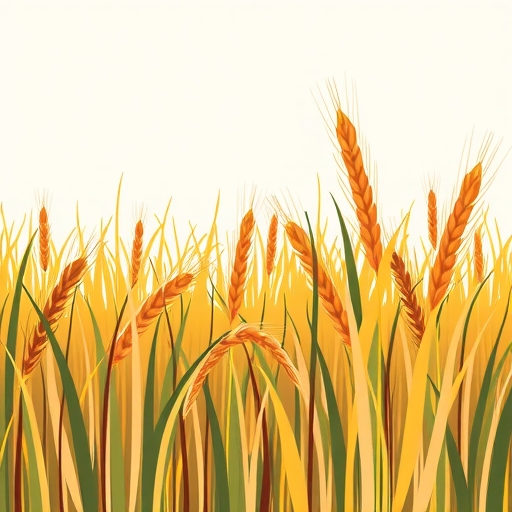
Investing in commodities can offer several distinct advantages for a well-rounded portfolio.
- Commodities can serve as a hedge against inflation, as their prices often rise during periods of increasing costs.
- They provide diversification benefits due to their low correlation with traditional assets like stocks and bonds.
- Exposure to commodities allows investors to capitalize on global supply and demand dynamics driven by population growth and economic development.
The Regulatory Landscape: Why Wheat ETCs, Not ETFs, in Europe
When you consider investing in a specific market segment, **Exchange Traded Funds (ETFs)** often come to mind. They are popular for their transparency, liquidity, and diversification. However, if you are an investor in the **European Union**, you might notice a curious absence of ETFs dedicated solely to a single commodity like wheat. Why is this the case? The answer lies primarily with the **UCITS Directive**, a set of EU regulations designed to protect retail investors by ensuring proper diversification and risk management for collective investment schemes. UCITS-compliant funds, which most ETFs are, must adhere to strict rules, including a requirement that no single asset can account for more than 20% (or 35% in exceptional circumstances) of the fund’s total assets. This rule effectively prevents the creation of single-commodity ETFs, as a fund holding only wheat would violate this diversification principle.
To further clarify the distinction, here is a summary of key differences between Exchange Traded Funds (ETFs) and Exchange Traded Commodities (ETCs) in the European market context.
| Feature | Exchange Traded Funds (ETFs) | Exchange Traded Commodities (ETCs) |
|---|---|---|
| Legal Structure | Collective Investment Scheme (Fund) | Debt Instrument (Bond) |
| UCITS Compliance | Generally UCITS-compliant | Not UCITS-compliant |
| Diversification Rule | Strict diversification required (e.g., max 20% in single asset) | No diversification rule; can hold single asset |
| Asset Focus | Broad market, sector, or diversified asset baskets | Single commodity or a specific basket of commodities |
| Availability for Single Commodity | Rare/not available in EU for single commodities | Common in EU for single commodities (e.g., wheat, gold) |
Instead, European investors looking for direct exposure to a single commodity like wheat turn to **Exchange Traded Commodities (ETCs)**. While similar in name and trading style to ETFs, ETCs are legally structured as debt instruments rather than funds. This distinction allows them to bypass the UCITS diversification rules, providing investors with focused access to individual commodities. For example, you will find products like **WisdomTree Wheat** trading on European exchanges, offering pure-play exposure. In contrast, the **U.S. market** operates under different regulations, and according to sources like ETF Database, there are currently no dedicated **Grains ETFs** openly trading in the U.S. that specifically focus on a basket of grains like wheat, soybeans, and corn. This highlights a significant regional difference in the availability of specific commodity investment products, underscoring the importance of understanding the regulatory environment in your jurisdiction.
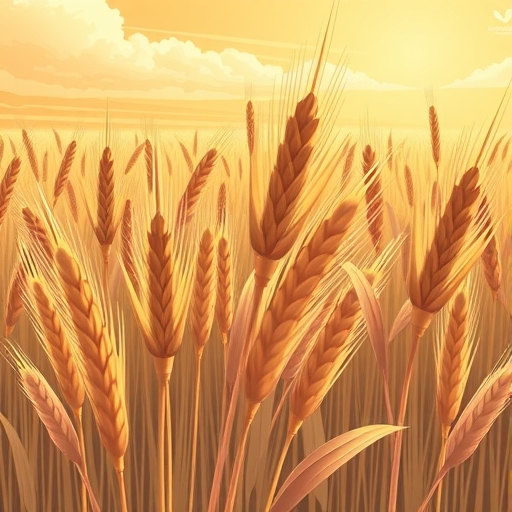
Understanding Wheat ETCs: Mechanics, Performance, and Key Factors
So, if **ETCs** are the primary way to invest in **wheat** in Europe, how do they actually work? Unlike some precious metal **ETCs** that hold physical bullion, **wheat ETCs** are typically **swap-based**. This means they don’t hold physical wheat in a warehouse. Instead, they enter into agreements (swaps) with financial institutions to replicate the performance of a specific **wheat futures contract index**, such as the **Bloomberg Wheat index**. When you invest in a **wheat ETC**, you are essentially gaining exposure to the price movements of these futures contracts, which are agreements to buy or sell a commodity at a predetermined price on a future date. To mitigate counterparty risk (the risk that the swap provider defaults), these **ETCs** are backed by collateral, often held in segregated accounts. This collateral usually consists of cash or highly-rated government bonds, which are checked daily to ensure they cover the ETC’s value.
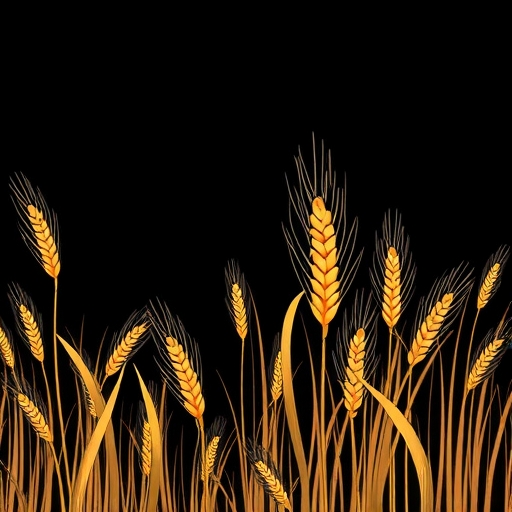
Let’s look at the performance. How have **wheat ETCs** fared recently? As of March/April 2025, the **Bloomberg Wheat index** and prominent wheat ETCs like **WisdomTree Wheat** (JE00BN7KB664) and **WisdomTree Wheat – EUR Daily Hedged** (JE00B78NNK09) have shown significant negative returns over the short to medium term. For instance, the Bloomberg Wheat index recorded a -21.49% return over one year, -59.64% over three years, and -54.74% over five years. This indicates a prolonged period of weakness in the **wheat market**, which can present a challenging environment for investors. However, for those with a long-term perspective and a high tolerance for risk, such periods of depressed prices can also be seen as potential entry points, offering a lucrative risk/reward profile at 52-week lows, assuming a future rebound.
Here is a quick summary of the recent performance of the Bloomberg Wheat index.
| Time Horizon | Bloomberg Wheat Index Return (Approx. as of Mar/Apr 2025) |
|---|---|
| 1 Year | -21.49% |
| 3 Years | -59.64% |
| 5 Years | -54.74% |
When considering an investment in **wheat ETCs**, several factors are crucial for you to evaluate:
- Total Expense Ratio (TER): This is the annual cost of holding the ETC. For wheat ETCs, the average TER is around 0.49%, which is a key consideration for your overall returns.
- Fund Size (Assets Under Management – AUM): Larger funds often benefit from better liquidity and lower bid-ask spreads, making them easier and cheaper to trade.
- Domicile: The legal home of the ETC, such as Jersey for the WisdomTree wheat products, can have implications for taxation and regulatory oversight.
- Replication Method: Understanding whether the ETC is swap-based (synthetic) or physically-backed (though rare for soft commodities) helps you grasp the underlying mechanics and risks.
- Currency Hedging: Some ETCs, like **WisdomTree Wheat – EUR Daily Hedged**, aim to mitigate currency risk if the underlying commodity is priced in a different currency (e.g., USD for wheat futures) than your local currency (e.g., EUR). This can be vital for European investors.
The Strategic Case for Commodities: Diversification and Inflation Hedging
Why should you even consider investing in **commodities** like **wheat** and **grains** in the first place? Beyond the direct potential for price appreciation, commodities offer powerful benefits for your investment portfolio, primarily **diversification** and **inflation hedging**. We often think of stocks and bonds as the pillars of a portfolio, but these assets tend to move in tandem, especially during market downturns. This is where commodities shine. Historically, **grains**, including wheat, have exhibited a **low correlation to the S&P 500** and other equity markets. This means that when stocks are struggling, commodities might be performing well, or at least moving independently, thereby reducing the overall volatility and risk of your portfolio. Imagine having a portion of your investments that doesn’t just sink when the stock market does – that’s the power of diversification.
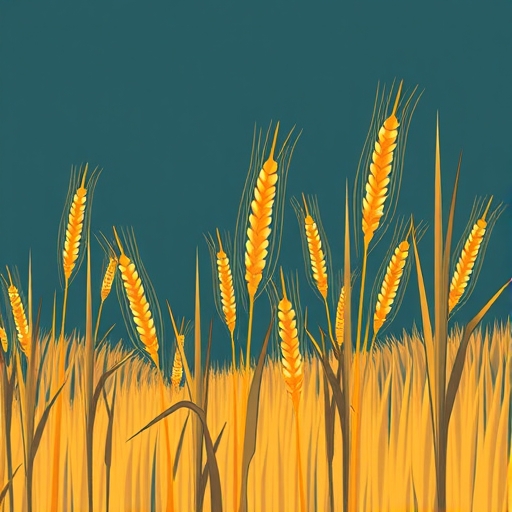
Another compelling reason to invest in commodities is their ability to act as a **hedge against inflation**. Inflation erodes the purchasing power of money, making your savings worth less over time. During periods of high inflation, commodity prices often rise significantly. Think back to the 1970s, a decade marked by soaring inflation; commodities delivered substantial positive returns, helping investors preserve their wealth. This is because commodities are real assets; their value is tied to the cost of production and demand for essential goods, which tend to increase with rising prices across the economy. As the **Consumer Price Index (CPI)** climbs, so too can the value of your commodity holdings, offering a crucial safeguard for your financial well-being.
Investing in commodities like grains can offer several strategic benefits to a diversified portfolio.
- They provide a natural hedge against rising inflation, as commodity prices tend to increase with general price levels.
- Commodities often exhibit a low correlation with traditional financial assets, helping to reduce overall portfolio volatility.
- Exposure to essential raw materials allows investors to participate in global economic growth and industrial demand.
What drives these prices? Several factors influence **commodity prices**, particularly for **agricultural commodities** like wheat and grains:
- Supply and Demand Dynamics: This is the most fundamental driver. Global population growth, especially in developing nations like China and India, consistently increases demand for food products, acting as a long-term tailwind for grain prices. Conversely, bumper harvests or supply chain disruptions can drastically alter supply.
- Geopolitics and Economic Strength: Geopolitical events, such as conflicts (e.g., in major grain-producing regions), trade wars, or sanctions, can severely impact commodity supply chains and prices. Strong global economic growth typically boosts demand for industrial and energy commodities, but also indirectly for agricultural products as incomes rise and dietary habits shift.
- Technological Changes: Advancements in farming technology can increase yields, while breakthroughs in areas like sustainable energy could impact demand for biofuels derived from grains.
- Seasonality and Weather Patterns: For agricultural commodities, weather conditions (droughts, floods) and seasonal planting/harvesting cycles are paramount. These factors introduce inherent volatility but also predictable patterns that experienced traders can leverage.
Navigating Risks and Ethical Dimensions in Grains Investing
While the allure of **diversification** and **inflation hedging** makes **commodity investing** attractive, it’s crucial to approach it with a clear understanding of the inherent risks. **Price volatility** is arguably the most significant risk associated with commodities, especially **agricultural commodities** like **wheat**. Prices can swing wildly due to unpredictable events such as adverse weather conditions, sudden geopolitical shifts, or changes in government agricultural policies. For instance, a drought in a major wheat-producing region can send prices soaring, while an unexpectedly large harvest elsewhere could cause them to plummet. This high volatility means that while there’s potential for significant gains, there’s also a considerable risk of substantial losses.
Key risks to consider when investing in grains or other commodities include:
| Risk Factor | Description |
|---|---|
| Price Volatility | Commodity prices can experience rapid and significant swings due to supply/demand imbalances, weather, or geopolitical events. |
| Currency Risk | For international investors, fluctuations in exchange rates between the commodity’s pricing currency (e.g., USD) and the investor’s local currency can impact returns. |
| Geopolitical Risk | Conflicts, trade policies, or sanctions in major producing or consuming regions can severely disrupt supply chains and price stability. |
| Weather Risk | Agricultural commodities are highly susceptible to adverse weather conditions (droughts, floods, extreme temperatures) affecting harvests. |
| Counterparty Risk | For swap-based ETCs, there is a risk that the financial institution providing the swap defaults, although this is often mitigated by collateralization. |
Another important consideration, particularly for European investors engaging with products priced in U.S. Dollars (as many global commodity contracts are), is **currency risk**. If you invest in a **wheat ETC** whose underlying futures contracts are denominated in USD, and you live in the Eurozone, fluctuations in the EUR/USD exchange rate can impact your returns. Even if the commodity price rises, a weakening USD against the EUR could erode your profits, or even turn them into losses. Some ETCs, like the **WisdomTree Wheat – EUR Daily Hedged** product, attempt to mitigate this risk through daily currency hedging, but it’s an additional layer of complexity to understand.
Beyond financial risks, investing in staple foods like **wheat** often raises **ethical concerns**. Some argue that speculation in **food commodity markets** can exacerbate price volatility, potentially leading to higher food prices for consumers in developing nations. This is a complex and often debated topic. While the moral implications of profiting from essential foodstuffs are undeniable, studies on the direct impact of financial speculation on basic food price fluctuations have been largely inconclusive. Many economists and researchers suggest that real economic factors—such as supply and demand imbalances, adverse weather, geopolitical events, and government policies—are the primary drivers of significant food price increases, rather than speculative trading alone. As an investor, it’s important to be aware of these debates and consider how your investment choices align with your personal values.
Investment Alternatives and Sharia-Compliant Commodity Exposure
Beyond directly investing in **wheat ETCs**, there are several other avenues you can explore to gain exposure to the **commodities market**, each with its own set of characteristics and suitability for different investors. One common alternative is to invest in **shares of commodity-producing companies**. For example, instead of buying a **wheat ETC**, you could invest in the stock of a large agricultural company involved in farming, processing, or distributing grains. This approach offers indirect exposure to commodity prices, as the company’s profitability is often linked to the underlying commodity’s value. However, it also introduces company-specific risks, such as management quality, debt levels, and operational efficiency, which require thorough due diligence.
Other ways to gain exposure to commodities, besides direct ETCs, include:
- Investing in **stocks of companies** that operate in the commodity sector, such as agricultural producers or mining companies.
- Utilizing **futures and options contracts** for direct, leveraged exposure, though these are typically for advanced investors due to high risk.
- Considering **multi-commodity funds or ETFs** (where available) that invest across a basket of different commodities to enhance diversification.
- For precious metals, **direct physical ownership** or physically-backed ETCs represent a tangible alternative.
For highly experienced and sophisticated investors, direct engagement with **futures and options contracts** on commodity exchanges (like the Chicago Board of Trade for grains) is possible. These are complex financial instruments that offer significant leverage but also carry extremely high risks. They are not suitable for most retail investors due to their intricate mechanics, margin requirements, and potential for rapid and substantial losses. A more direct, albeit impractical for soft commodities, method is **direct physical ownership**. While feasible for precious metals (e.g., buying gold bars), it’s generally not practical or cost-effective for bulk agricultural commodities like wheat due to storage, insurance, and transportation costs.
A crucial consideration for a segment of investors is **Sharia-compliant investing**. For an investment to be considered Sharia-compliant, it must adhere to Islamic financial principles, which prohibit certain activities such as earning interest (riba), excessive uncertainty (gharar), and investing in forbidden industries (haram). When it comes to **commodities**, the core principle is that the investor must take **direct physical ownership** of the commodity. This means:
- Permissible: Physically-backed precious metal ETCs, such as **Wisdomtree Physical Gold** (PHAU: LSE) or **Global X Physical PM Basket** (PHPM: LSE), are generally considered Sharia-compliant because they represent actual ownership of the underlying metal, which is stored securely.
- Generally Impermissible for Soft Commodities: Most **futures-based soft commodity ETCs**, including those for **wheat**, are typically deemed impermissible. This is because they rely on **futures contracts** rather than direct physical possession. The nature of futures, involving agreements to buy or sell something not yet physically possessed or delivered, often falls under the prohibition of gharar (excessive uncertainty or ambiguity in contracts) and the absence of immediate possession during the transaction.
Therefore, if you are seeking **Sharia-compliant exposure** to agricultural commodities, direct ETCs based on futures are usually not an option. Instead, you might explore specialized **Islamic Commodity funds** that employ compliant structures, or invest in companies whose core business activities and financial structures align with Sharia principles.
Conclusion: Navigating the Grains Market with Knowledge
Investing in **wheat** and other **grains** offers a distinct path to portfolio **diversification** and **inflation protection**, particularly through **Exchange Traded Commodities (ETCs)** in the **European market**. While recent performance data from indices like the **Bloomberg Wheat index** indicates a period of significant headwinds and negative returns, the long-term fundamental drivers of global demand, fueled by population growth, remain compelling. We’ve seen how the **UCITS Directive** shapes product availability in Europe, leading to the prevalence of swap-based **ETCs** that track **futures contracts** and are backed by collateral. Understanding these mechanics, along with key factors like the **Total Expense Ratio (TER)** and currency hedging, is essential for any informed investor.
However, it is equally important for you to weigh the inherent **price volatility** and **currency risk** associated with **commodity investing**, as well as the ongoing **ethical debates** surrounding speculation on essential food items. For those seeking **Sharia-compliant** investment options, the requirement for direct physical ownership significantly limits the availability of traditional **soft commodity ETCs**, necessitating a search for alternative, compliant structures or indirect exposure. By taking a well-informed and considered approach to **commodity investing**, you can enhance the resilience of your portfolio in turbulent economic times and potentially capture growth from the foundational elements of our global economy. Always remember to conduct your own thorough research and consider your personal financial situation and risk tolerance before making any investment decisions.
Disclaimer: This article is for informational purposes only and does not constitute financial advice. Investing in commodities, including wheat and grains, involves substantial risks, including the potential loss of principal. Past performance is not indicative of future results. Always consult with a qualified financial advisor before making any investment decisions.
Frequently Asked Questions (FAQ)
Q: Why are there no single-commodity ETFs specifically for wheat available to retail investors in the European Union?
A: The absence of single-commodity ETFs in the EU is primarily due to the UCITS Directive. This regulation requires collective investment schemes, which most ETFs are, to maintain a high level of diversification. Funds cannot allocate more than 20% (or 35% in exceptional cases) of their assets to a single security, effectively preventing the creation of ETFs focused on just one commodity like wheat.
Q: How do wheat Exchange Traded Commodities (ETCs) typically work, and what are their underlying assets?
A: Wheat ETCs in Europe are usually swap-based. This means they do not hold physical wheat. Instead, they enter into agreements (swaps) with financial institutions to replicate the performance of a specific wheat futures contract index, such as the Bloomberg Wheat index. These ETCs are backed by collateral, often in cash or highly-rated government bonds, to mitigate counterparty risk.
Q: Is investing in futures-based soft commodity ETCs, such as those for wheat, considered Sharia-compliant?
A: Generally, most futures-based soft commodity ETCs, including those for wheat, are not considered Sharia-compliant. Islamic finance principles require direct physical ownership of the commodity, and futures contracts typically involve agreements to buy or sell something not yet physically possessed or delivered, often falling under the prohibition of excessive uncertainty (gharar) and lacking immediate possession during the transaction.


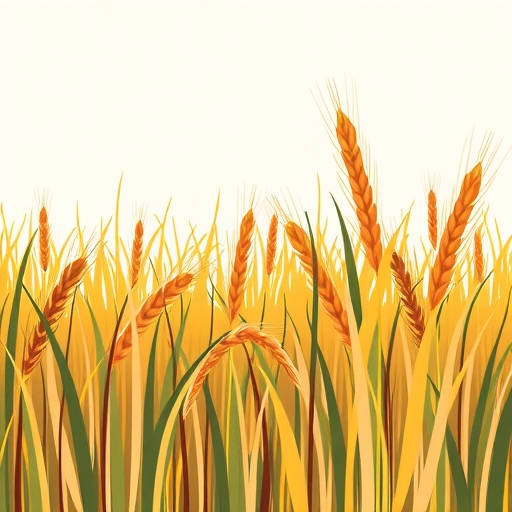
No responses yet